BADM 460
Capilano University (CapU )
All 6 results
Sort by
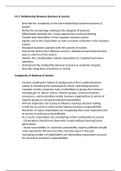
-
Chapter 1: The Relationship between Business and Society
- Summary • 9 pages • 2019
-
- $6.02
- + learn more
Summary of Chapter 1: The Relationship between Business and Society Objectives: 1. Describe the complexity of the interrelationships between business and society. 2. Define the terminology relating to the integrity of business. 3. Differentiate between the three main approaches to ethical thinking. 4. Provide a brief description of the Canadian business system. 5. Explain the role of the corporation as the main economic institution in the business system. 6. Recognize that business opera...
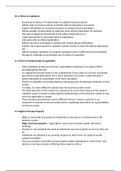
-
Chapter 2: Ethics and Capitalism
- Summary • 6 pages • 2019
-
- $6.02
- + learn more
Summary of Chapter 2: Ethics and Capitalism Objectives: 1. Enumerate and discuss the eight fundamentals of a capitalist business system. 2. Define the right of private property and identify ethical implications associated with it. 3. Explain individualism and economic freedom and the related ethical implications. 4. Define equality of opportunity and elaborate upon the ethical implications for business. 5. Describe the competition fundamental and link ethical implications to it. 6. Unde...
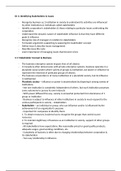
-
Chapter 5: Identifying Stakeholders and Issues
- Summary • 6 pages • 2019
-
- $6.02
- + learn more
Summary of Chapter 5: Identifying Stakeholders and Issues Objectives 1. Recognize business as one institution in society and understand that its activities are influenced by other institutions and individuals referred to as stakeholders. 2. Identify the corporation’s stakeholders generally and the stakeholders relating to particular issues confronting the corporation. 3. Understand the dynamic nature of stakeholder influence and that stakeholders have different goals and influence. 4. Rec...
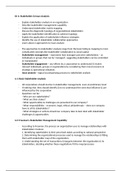
-
Chapter 4: Stakeholder and Issue Analysis
- Summary • 3 pages • 2019
-
- $6.02
- + learn more
Summary of Chapter 4: Stakeholder and Issue Analysis Objectives: 1. Explain stakeholder analysis in an organization. 2. Describe stakeholder management capability. 3. Understand stakeholder matrix mapping. 4. Discuss the diagnostic typology of organizational stakeholders. 5. Apply the stakeholder identification and salience typology. 6. Explain the application of stakeholder influence strategies. 7. Identify the use of stakeholder collaboration approaches. 9. Learn about two approaches ...
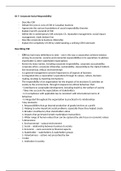
-
Chapter 7: Corporate Social Responsibility: The Concept
- Summary • 5 pages • 2019
-
- $6.02
- + learn more
Summary of Chapter 7: Corporate Social Responsibility: The Concept Objectives: 1. Describe corporate social responsibility (CSR). 2. Debate the pros and cons of corporate social responsibility in Canadian business. 3. Appreciate the various foundations of social responsibility theories. 4. Explain Carroll’s pyramid of corporate social responsibility. 5. Define the four contemporary CSR concepts: corporate sustainability, reputation management, social impact management, and triple bottom ...
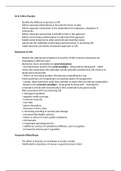
-
Chapter 8: Corporate Social Responsibility: In Practice
- Summary • 4 pages • 2019
-
- $6.02
- + learn more
Summary of Chapter 8: Corporate Social Responsibility: In Practice Objectives: 1. Identify the different responses to corporate social responsibility. 2. Define corporate philanthropy and describe the forms it takes. 3. Define corporate voluntarism and describe the implications for employees, employers, and the community. 4. Define corporate sponsorship and identify trends in this approach to CSR. 5. Define social venture philanthropy and understand this approach to CSR. 6. Explain what ...

How much did you already spend on Stuvia? Imagine there are plenty more of you out there paying for study notes, but this time YOU are the seller. Ka-ching! Discover all about earning on Stuvia


